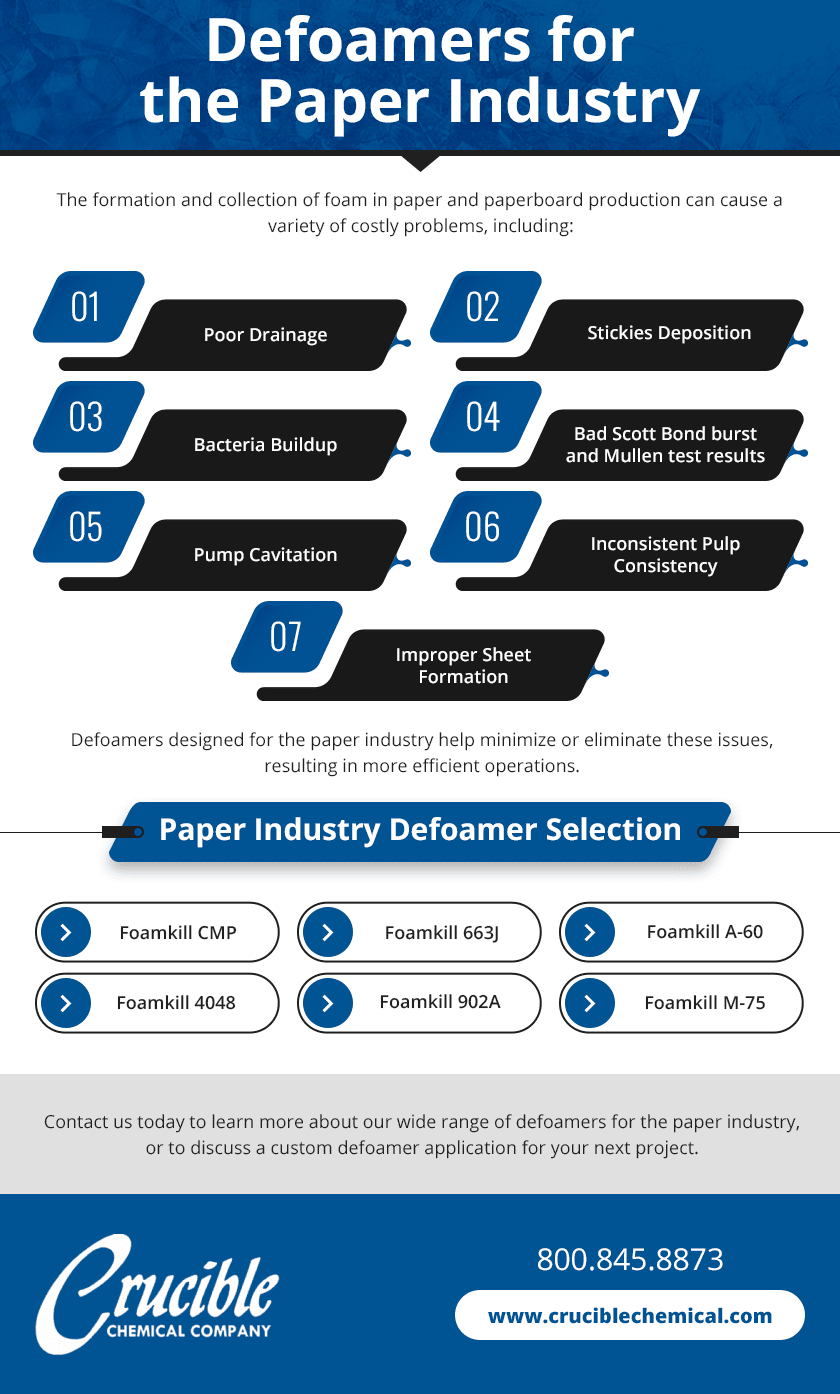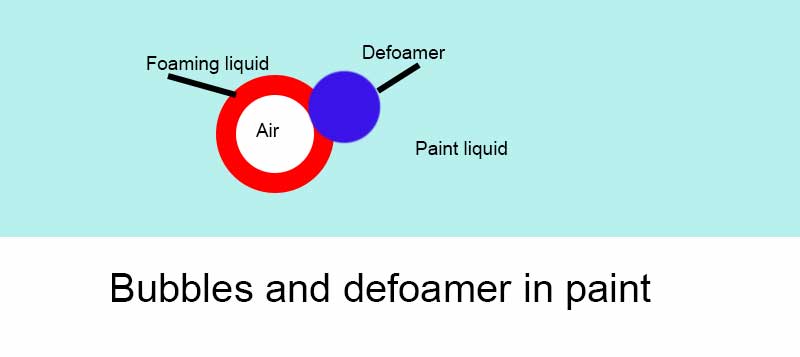The Role of Defoamers in the Chemical and Food Processing Industries
The Role of Defoamers in the Chemical and Food Processing Industries
Blog Article
Picking the Right Defoamer for Your Specific Application Needs
Choosing the ideal defoamer for certain application requirements is a nuanced process that requires careful consideration of numerous aspects, such as the foam operating, medium, and kind problems. Understanding the nuances of defoamer performance-- consisting of rate and determination-- while likewise representing ecological and regulatory aspects is crucial. Furthermore, participating in tests and consulting with producers can offer beneficial understandings. Browsing these intricacies can be challenging, and the consequences of an inadequate choice may be considerable. What techniques can be used to ensure an optimal choice?
Comprehending Foam Development
Foam development occurs when gas is entraped within a fluid, creating a steady framework of bubbles. This phenomenon can significantly affect various commercial procedures, specifically in markets such as food manufacturing, pharmaceuticals, and wastewater therapy. The existence of foam can hinder blending, minimize item high quality, and even result in functional ineffectiveness.
Foam normally develops as a result of a combination of factors, including surface-active agents, frustration, and the attributes of the liquid phase. Surfactants lower the surface tension of the liquid, facilitating the formation of bubbles that can stabilize and integrate. Frustration, whether from mechanical stirring or gas introduction, boosts bubble development, leading to raised foam quantity.
Comprehending the technicians of foam development is essential for industries intending to optimize their processes. By determining the particular problems that advertise foam generation, organizations can execute methods to alleviate its effects.
Sorts Of Defoamers Available
Different kinds of defoamers are available to attend to the obstacles posed by foam in industrial applications. defoamers. Broadly identified, defoamers come under 3 categories: silicone-based, non-silicone-based, and all-natural defoamers
Silicone-based defoamers are renowned for their efficiency and security throughout a wide array of temperatures and pH degrees. They are generally utilized in applications where solid foam reductions is required, such as in coverings, adhesives, and paints. Their reduced surface tension permits rapid foam collapse.
Non-silicone-based defoamers, commonly made from organic substances, supply an alternative for applications delicate to silicone residues. These defoamers can be further divided into polyether and ester types, each customized to meet details formula needs. Non-silicone defoamers are frequently utilized in food handling and individual treatment items due to their compatibility with numerous solutions.
All-natural defoamers, stemmed from plant or animal sources, are acquiring grip due to their environmentally friendly profile. These items are especially appealing in applications where regulatory conformity and sustainability are paramount, such as in agrochemicals and biotechnology.
Picking the best kind of defoamer is vital for maximizing performance and guaranteeing compatibility with particular applications.
Trick Application Factors To Consider
When picking a defoamer, it is important to think about the certain application needs to ensure ideal performance. defoamers. Various markets have distinctive requirements, such as food processing, pharmaceuticals, or wastewater treatment, and each application might need one-of-a-kind defoaming residential properties
Secret factors to examine consist of the medium in which the defoamer will certainly be utilized, whether it is water-based, oil-based, or a mix thereof. The temperature and pH levels of the application can additionally considerably affect the efficiency of a defoamer. Additionally, compatibility with other chemicals existing in the system is essential to protect against unfavorable reactions that might compromise performance.
One more important factor to consider is the foaming behavior of the particular system. Recognizing whether the foam creates rapidly or slowly can direct the option of a defoamer that targets the source successfully. you can look here The preferred speed of defoaming can influence the option, as some applications call for rapid action while others may endure slower defoaming procedures.
Last but not least, ecological and governing factors to consider should not be forgotten, especially in industries with strict conformity requirements. Selecting a defoamer that aligns with these elements ensures both effectiveness and security in the application.

Efficiency Testing Methods
Reviewing the performance of a defoamer needs an organized technique to testing that properly determines its efficiency in specific applications. Numerous efficiency testing approaches can be employed to determine the ideal defoamer for an offered solution.
One usual technique is the bubble examination, which evaluates the defoamer's capability to minimize foam volume over time. This test involves creating a secure foam and after that including the defoamer to observe the rate of foam collapse.

Eventually, picking the ideal performance testing method relies on the details application and the type of foam being addressed. Each approach supplies valuable data that can guide formulation adjustments and boost the effectiveness of the defoamer in useful applications.
Ideal Practices for Choice


Following, consider the defoamer's efficiency in regards to speed of action and persistence. A quick-acting defoamer might be required for processes where rapid foam recommended you read suppression is vital, while an extra consistent solution may be required for long term foam control. In addition, review the environmental effect of the defoamer, including its biodegradability and any regulatory compliance demands.
Conduct trials with selected defoamers to determine their efficiency in real-world problems. By sticking to these best techniques, you can enhance foam control performance and make sure the longevity of your procedures.
Conclusion
In recap, picking the appropriate defoamer requires an extensive examination of different variables, consisting of foam kind, medium, operating problems, and environmental considerations. Comprehending the special go to website features of foam development and the readily available defoamer choices is essential.
Choosing the appropriate defoamer for details application needs is a nuanced process that requires mindful factor to consider of multiple factors, such as the foam medium, type, and operating problems.Picking the appropriate defoamer is essential for achieving optimum performance in foam control applications. A quick-acting defoamer might be required for processes where rapid foam suppression is crucial, while an extra relentless formula may be required for extended foam control.In recap, picking the ideal defoamer demands an extensive analysis of numerous elements, including foam type, medium, operating problems, and environmental factors to consider. Recognizing the one-of-a-kind characteristics of foam development and the offered defoamer alternatives is vital.
Report this page